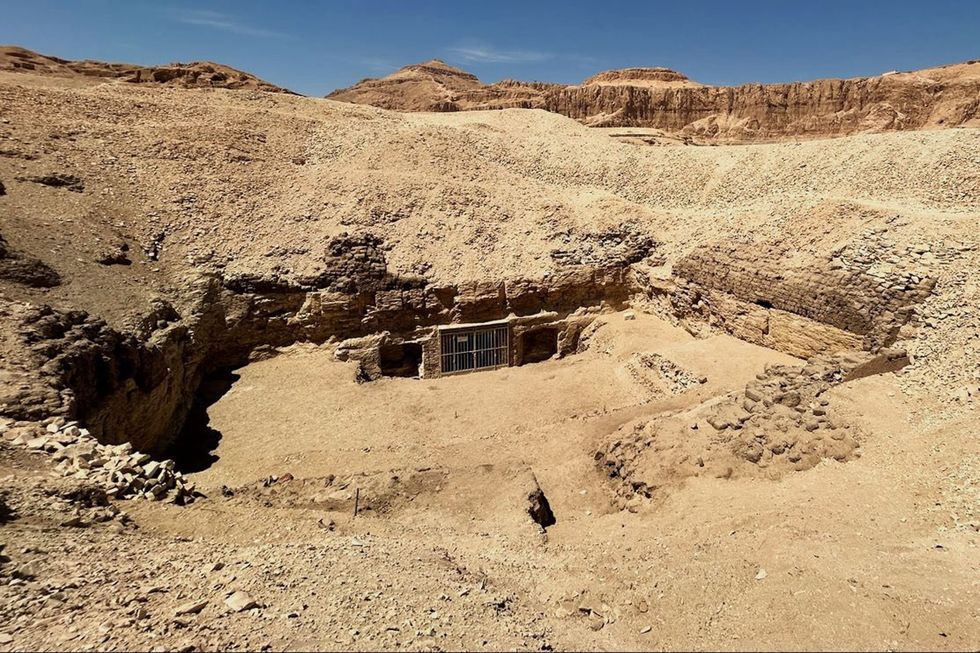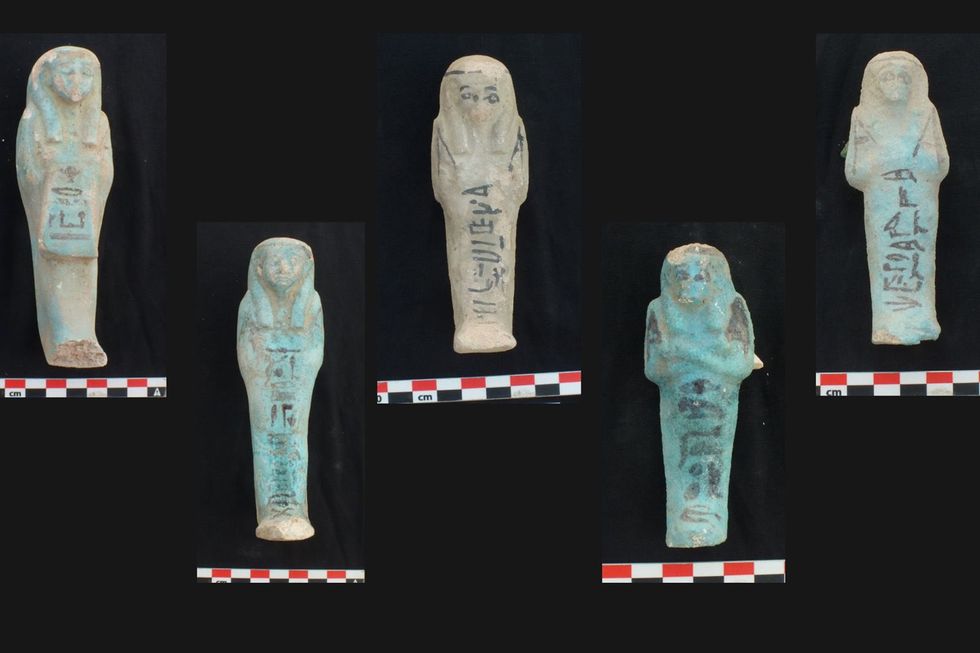Archaeology breakthrough as owner of ancient Egyptian tomb finally identified FIVE DECADES after it was discovered

The mystery of Kampp 23 has finally been solved
Don't Miss
Most Read
A joint Egyptian-Canadian archaeological mission has successfully identified the owner of an ancient tomb discovered in the 1970s, solving a mystery that has persisted for five decades.
The tomb, known as Kampp 23 and located in the Asasif area on Luxor's West Bank, has now been attributed to Amun-Mes, a high-ranking official who served as Mayor of ancient Thebes during the Ramesside Period.
The breakthrough was achieved by a collaborative team from Egypt's Supreme Council of Antiquities (SCA) and the University of Ontario.
According to Mohamed Ismail Khaled, Secretary-General of the SCA, this marks the first mission to conduct fieldwork inside the tomb since its original discovery.

The entrance to Kampp 23
|Egymonuments
Amun-Mes held several prestigious titles during his service, including "King's Adviser," "God's Father of Amun," "Tax Collector," and "Head of Quarry Services" for King Ramses IV's expedition to Wadi Hammamat.
The team was able to confirm the identity of the tomb's owner and several of his titles through recent excavations.
Archaeologists have noted similarities between inscriptions found across the West Bank and the titles attributed to Amun-Mes.
However, experts caution that further study is needed to determine whether all these references pertain to the same individual, highlighting the complexity of identifying ancient Egyptian officials across multiple historical records.
LATEST DEVELOPMENTS

Some of the inscriptions found at the tomb
|Egymonuments
The tomb is carved into rock and follows the T-shaped layout typical of Ramesside-era tombs. It includes an open courtyard bordered by mudbrick walls on three sides, with remains of a large mudbrick pylon to the east and two niches flanking the entrance.
Inside, the structure features a vestibule leading to the burial chamber and contains rock-carved statues within the transverse hall and sanctuary.
Abdel-Ghaffar Wajdi, head of the Egyptian team, noted signs that the tomb had been reused in later periods.
Among the discoveries were remnants of coloured plaster covering limestone inscriptions, fragments of the original entrance, and parts of funerary items such as ushabti figurines.
Casey L Kirkpatrick, who leads the Canadian side of the mission, said the team will continue its excavation and analysis to deepen understanding of the tomb's owner and his historical context.
She expressed hope that future seasons would clarify unanswered questions about Amun-Mes's identity and status.
Minister of Tourism and Antiquities Sherif Fathy hailed the announcement as a notable addition to the record of joint Egyptian-international archaeological missions, emphasising the value of continued cooperation with global academic institutions.
Fathy described the find as a meaningful contribution to Egypt's cultural tourism narrative and reiterated the government's support for archaeological research.











